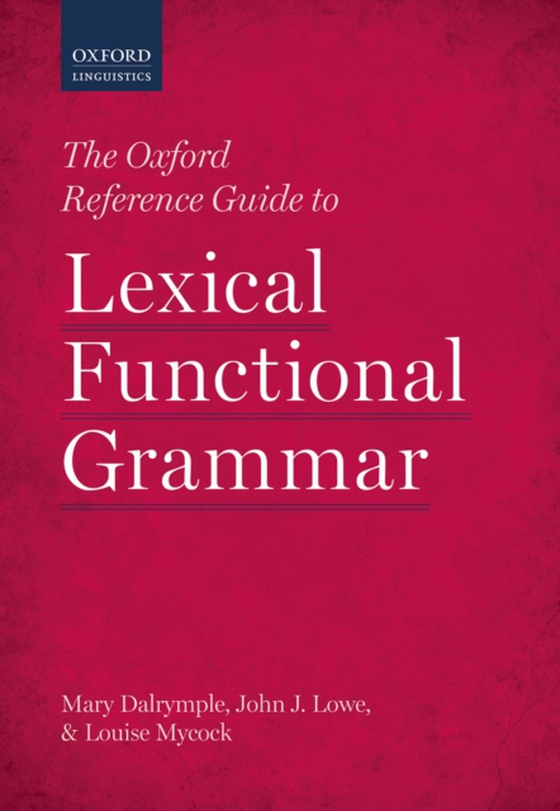
Oxford Reference Guide to Lexical Functional Grammar e-bog
1459,97 DKK
(inkl. moms 1824,96 DKK)
This volume is the most comprehensive reference work to date on Lexical Functional Grammar. The authors provide detailed and extensive coverage of the analysis of syntax, semantics, morphology, prosody, and information structure, and how these aspects of linguistic structure interact in the nontransformational framework of LFG. The book is divided into three parts. The first part examines the...
E-bog
1459,97 DKK
Forlag
OUP Oxford
Udgivet
2 oktober 2019
Længde
800 sider
Genrer
CFGA
Sprog
English
Format
pdf
Beskyttelse
LCP
ISBN
9780191047954
This volume is the most comprehensive reference work to date on Lexical Functional Grammar. The authors provide detailed and extensive coverage of the analysis of syntax, semantics, morphology, prosody, and information structure, and how these aspects of linguistic structure interact in the nontransformational framework of LFG. The book is divided into three parts. The first part examines the syntactic theory and formal architecture of LFG, with detailed explanations and comprehensive illustration, providing an unparalleled introduction to the fundamentals of the theory. Part two explores non-syntactic levels of linguistic structure, including the syntax-semantics interface and semantic representation, argument structure, information structure, prosodic structure, and morphological structure, and how these are relatedin the projection architecture of LFG. Chapters in the third part illustrate the theory more explicitly by presenting explorations of the syntax and semantics of a range of representative linguistic phenomena: modification, anaphora, control, coordination, and long-distance dependencies. The finalchapter discusses LFG-based work not covered elsewhere in the book, as well as new developments in the theory. The volume will be an invaluable reference for graduate and advanced undergraduate students and researchers in a wide range of linguistic sub-fields, including syntax, morphology, semantics, information structure, and prosody, as well as those working in language documentation and description.
 Dansk
Dansk

